14.7 Rising temperatures have been accompanied by diverse changes in the Earth system
The increase in greenhouse gases and global temperatures over the last century has set into motion a variety of changes to Earth’s systems. Some of the most striking consequences of climate change include the melting of the ice caps, the warming of the oceans, the shifting of species’ geographic ranges and seasonality, and the die-
Melting Ice
In mid-
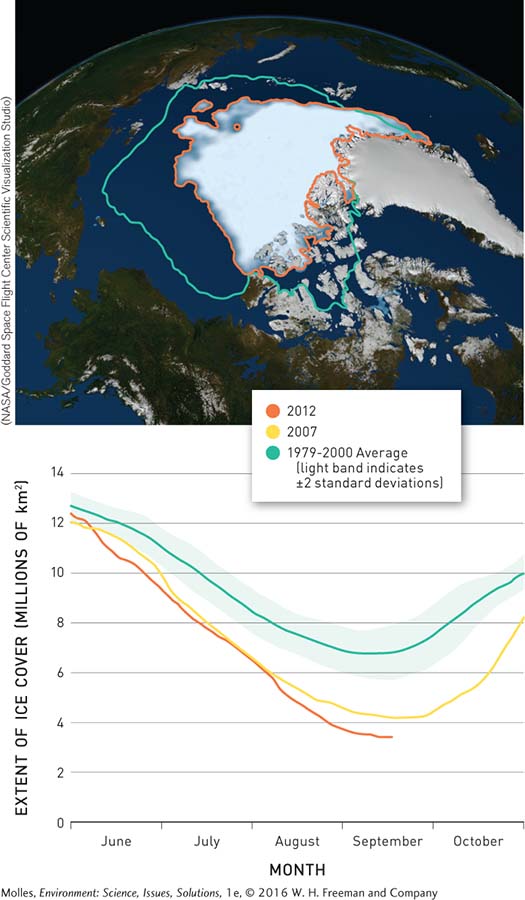
As reflective ice is replaced with open water, more heat will be stored in the world’s oceans, which will pump more water vapor into the atmosphere. Both changes will amplify global warming. Meanwhile, polar bears and ring seals, for which sea ice is essential habitat, are two potential victims of climate change. The opening of Arctic waters has also set in motion an economic race, between Russia, Canada, the United States, and other nations, to claim rights to mineral wealth under the Arctic seafloor, particularly oil and natural gas deposits.
On land, the ice sheets, glaciers, and ice caps are also melting at a rapid rate, causing sea level to rise. In July 2012 a ridge of warm air stalled over Greenland, melting the surface of its ice sheet over large areas. Four days later, the Petermann Glacier on Greenland split and shed a gigantic ice island with a surface area of 120 km2 (46 mi2)—about twice the size of Manhattan Island (Figure 14.23). Warming of the oceans also contributes to sea level rise, since water expands as it heats up.
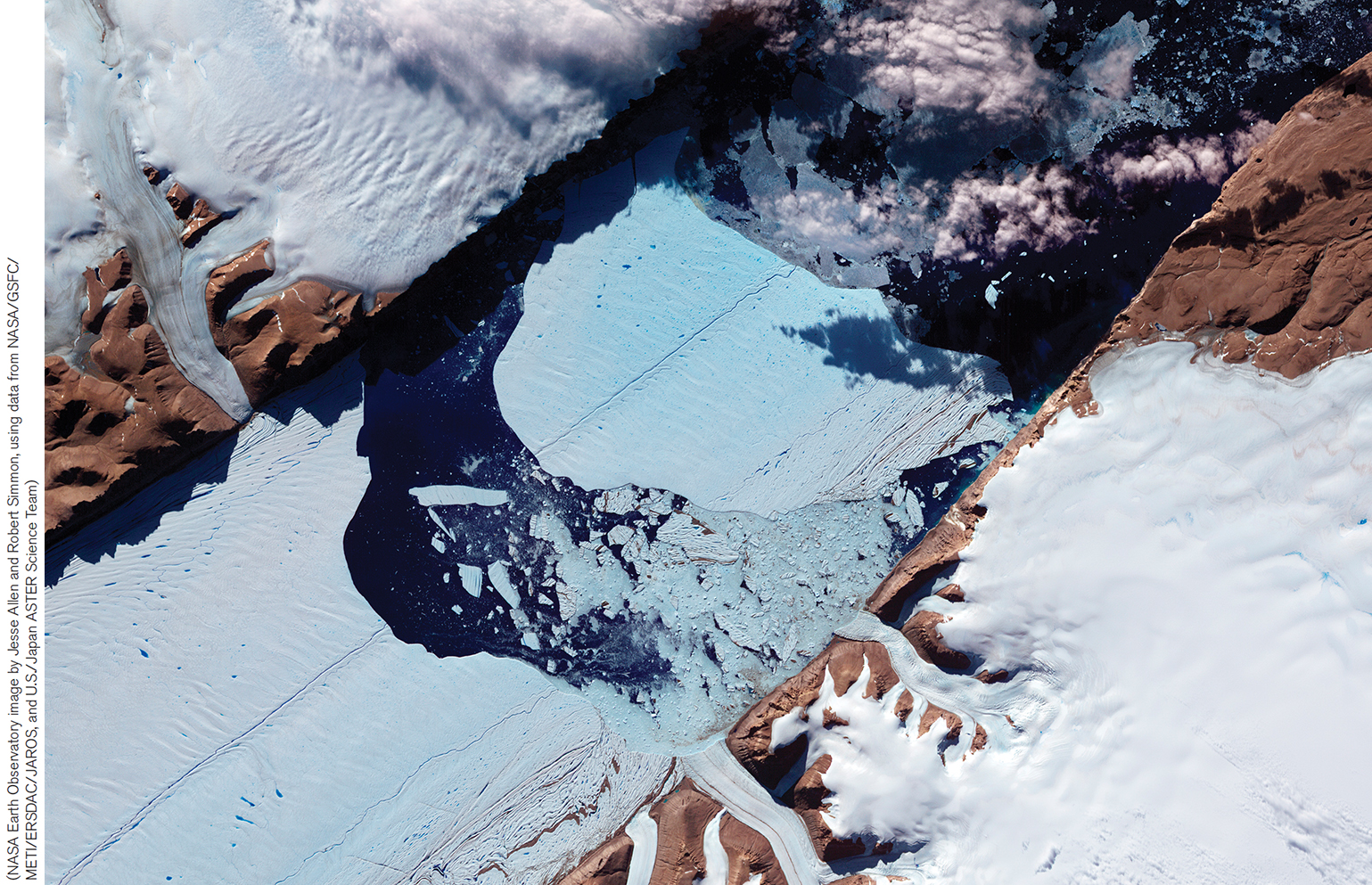
The human and economic impacts of sea level rise will be substantial, since the human population is concentrated in coastal areas with their ports and beaches. Over the last century, the oceans have risen about 20 centimeters (8 inches), but scientists predict the rate of rise will speed up significantly over the next century, along with temperatures. Rising sea levels have already forced the movement of communities from low-
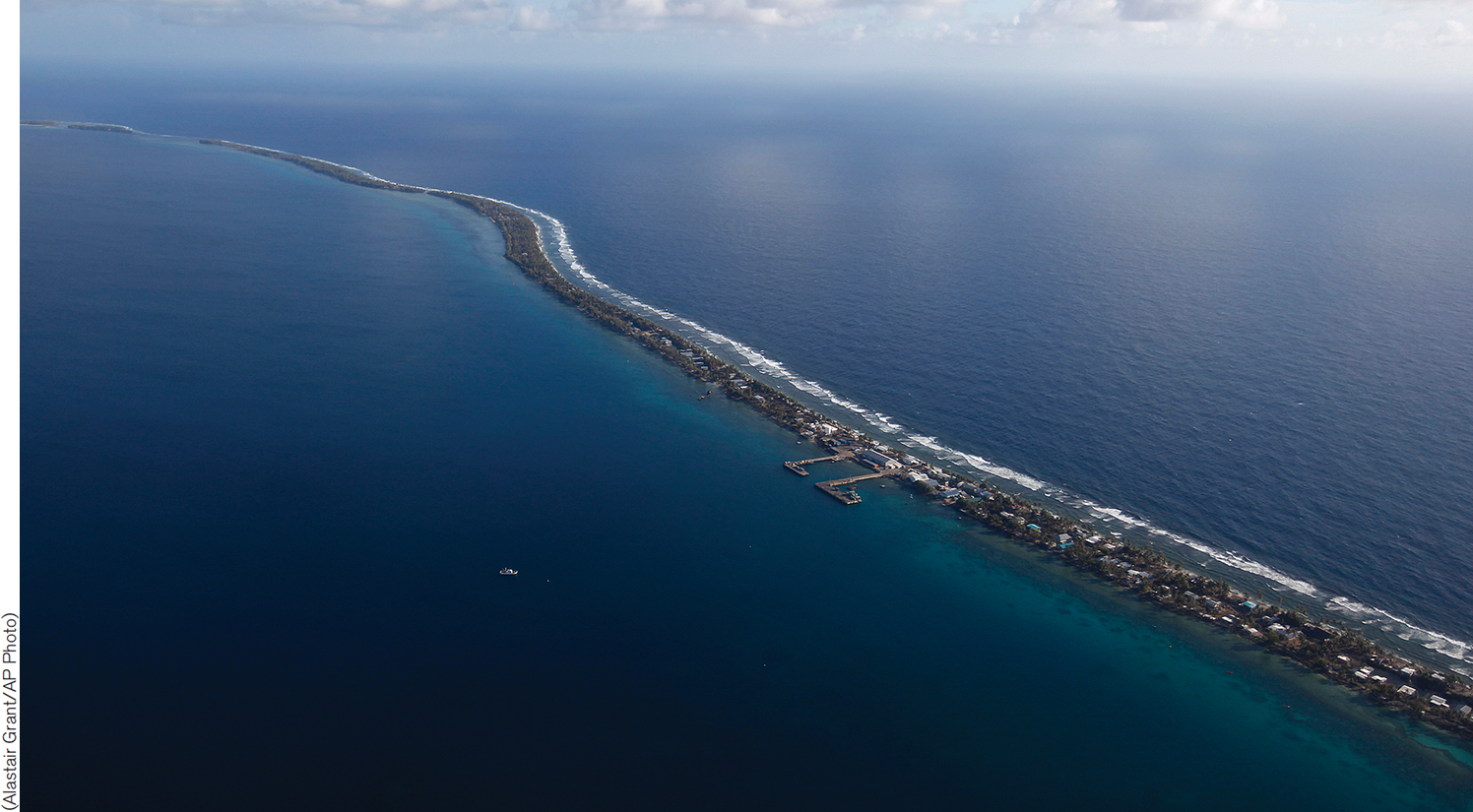
The impacts of the melting ice will not be felt equally around the globe. Recent research shows that, compared with many other regions, sea level has been rising more rapidly along the northeastern coast of the United States. Consequently, Boston, New York, Philadelphia, and Baltimore may be among the first major urban and economic centers to suffer damages from coastal flooding.
Warming Oceans
The global ocean is the largest heat sink for the warming Earth, dwarfing all other parts of the Earth system (Figure 14.25). However, it’s not just that the global ocean is the planet’s largest absorber of heat. One would expect that of such a large mass of water. The significant thing, from a climate change perspective, is that the ocean’s heat content is increasing (Figure 14.26). One result of a warmer ocean is the loss of photosynthesizing plankton, which account for half of primary production on Earth. This decline in production would lead to declines in the fish populations that humans depend on.
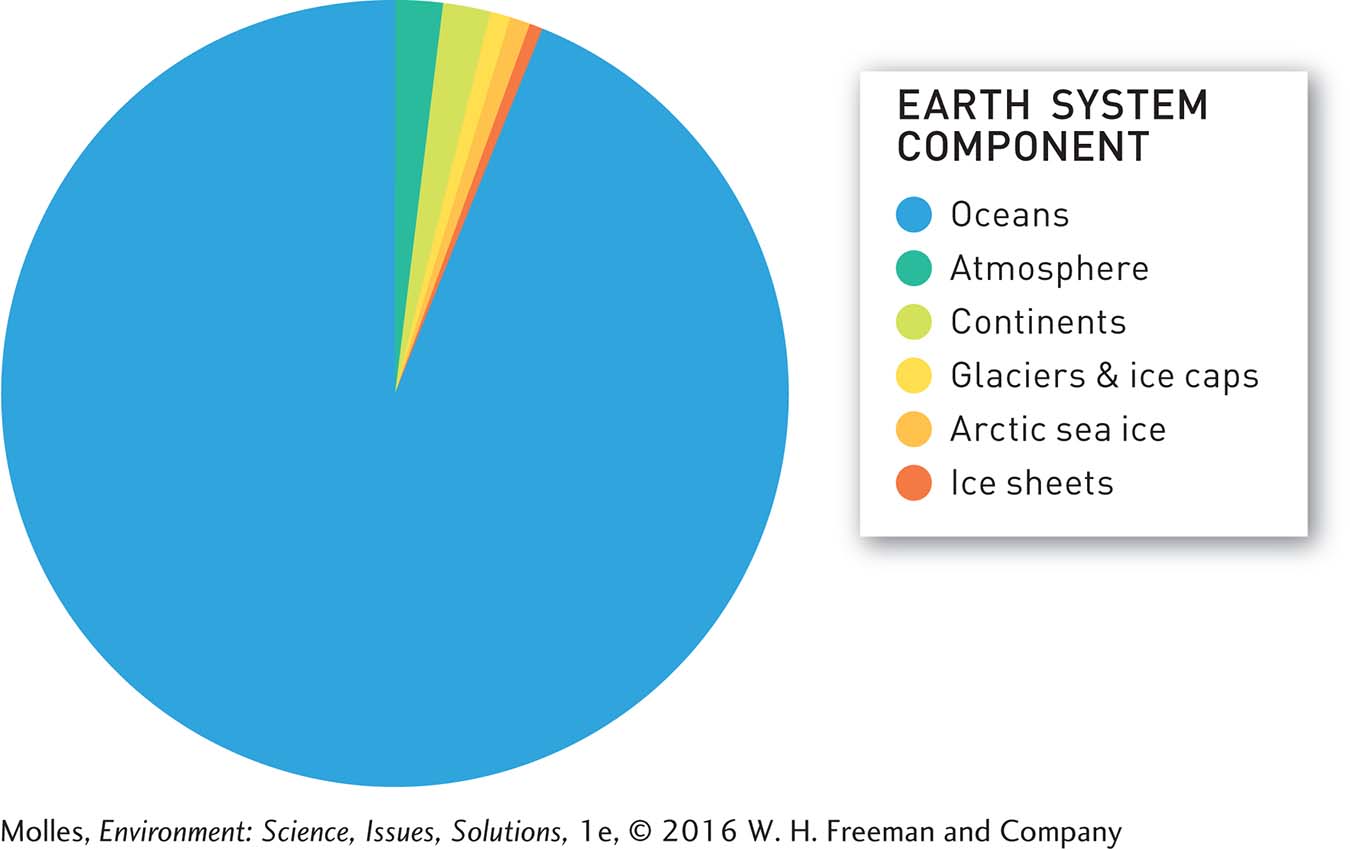
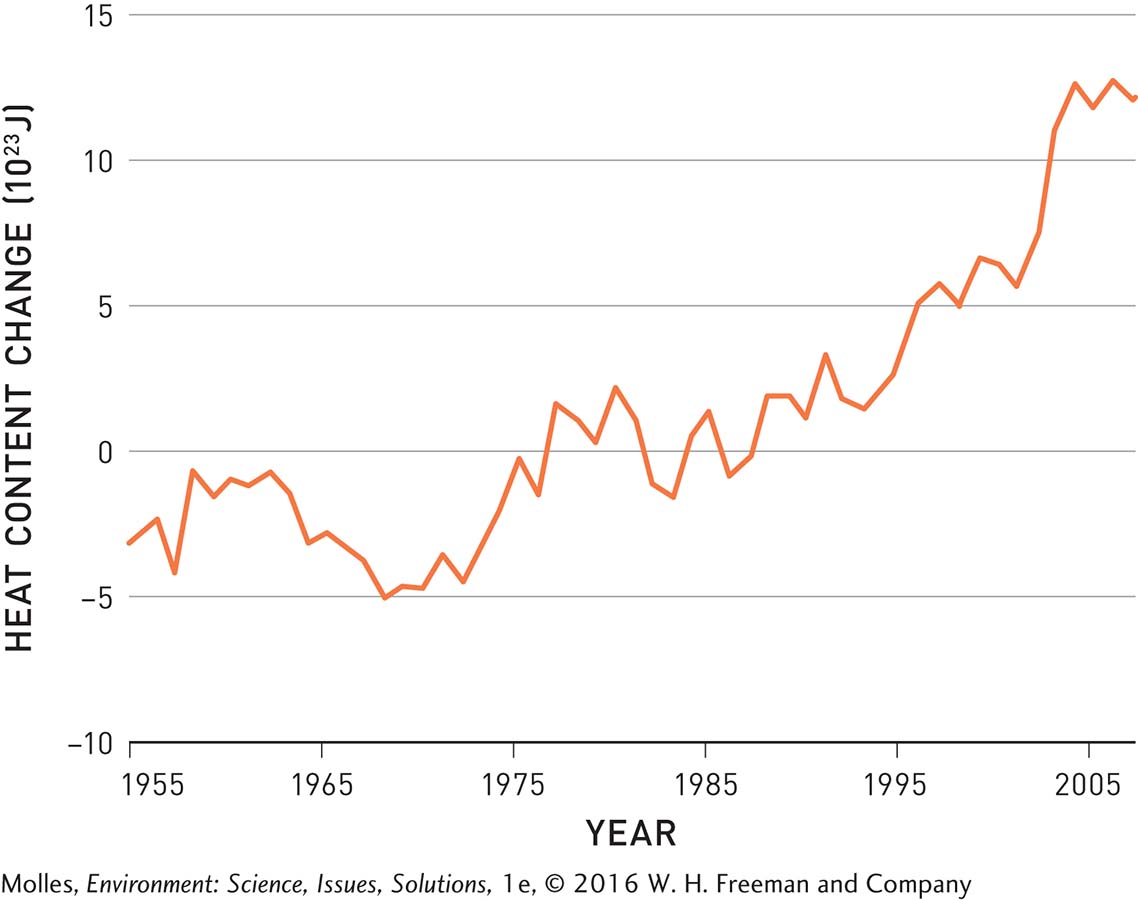
How could ocean warming result in lower marine primary production? As we saw in Chapter 8, primary production in the oceans is controlled mainly by the availability of inorganic nutrients, such as iron, which are generally found in greatest supply where they can be renewed by runoff from land; by upwelling; and by mixing of deep, nutrient-
Scientists are already observing losses in the ocean’s phytoplankton biomass at a rate of about 1% per year. A 2010 article in Nature reported declines in phytoplankton biomass in 8 of 10 ocean regions since 1899. Another study found that the ocean’s least productive waters grew by 6.6 million km2 between 1998 and 2006 (Figure 14.27).
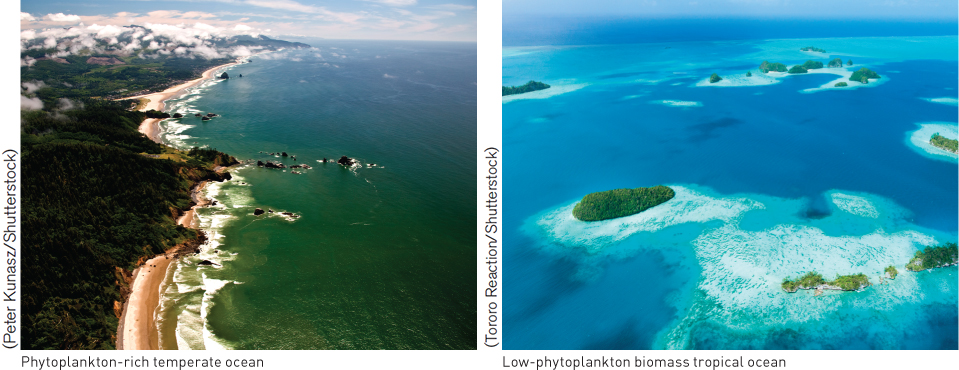
Shifts in Species’ Ranges and Seasonality
Owing to climate change, spring comes earlier every year and winter later, a phenomenon that has major biological impacts. Many plants that once bloomed in May are now blooming in April, and hibernating mammals that once emerged from their dens in March are emerging in February. In the eastern North Pacific, gray whales (Eschrichtius robustus) travel farther north in the Arctic Ocean during the summer, stay at their northern feeding grounds later in the year, and sometimes overwinter in northern waters.
This is an example of how geographic ranges of species are shifting—

Movements northward and upward in elevation have also been documented in plants, birds, mammals, fish, and a wide range of insects, spiders, and other invertebrates. As some have debated the reality of global warming, Earth’s inhabitants have been voting with their feet, wings, and fins.
Dying Forests and Corals
While some groups of organisms are shifting distributions in response to climate change, other, less mobile organisms are dying off. This mortality is especially noticeable where it involves foundation species (see Chapter 4, page 104)—for example, reef-

In June 2010 abnormally warm waters swept through the shallow water reefs of the Caribbean, causing a devastating coral bleaching event. Coral bleaching occurs when reef-

Why have there been so many major blizzards and snowfalls in recent U.S. winters if the overall climate is warming? Shouldn’t there be fewer?
As we learned earlier, wildfires in the western United States during 2011 and 2012 were among the largest and most costly ever recorded. The stress induced by high temperatures and drought can kill standing trees, increasing dry tinder and, as a result, the intensity of wildfires. In times past, forests would reestablish on burned areas. However, forest ecologists predict that the high intensity of recent fires may cause these and other forests around the world to be replaced with other, more drought-
Think About It
We tend to think only of the negative consequences of climate change, but are there any economic benefits?
How might coastal communities adapt to rising sea levels?